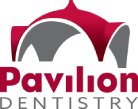Temporomandibular joint disorders affect millions of Canadians, causing jaw pain, headaches, and difficulty chewing. An orthodontist plays a crucial role in treating TMJ problems through bite correction and alignment therapy. At Pavilion Dentistry in St. Catharines, patients often discover that their jaw problems stem from bite misalignment issues that an orthodontist can effectively address.
Understanding TMJ Disorders and Orthodontic Treatment
TMJ disorders involve dysfunction of the temporomandibular joints that connect the jawbone to the skull. These complex joints allow for speaking, chewing, and yawning movements. When bite alignment problems exist, the jaw joints must work harder to function properly, leading to pain and dysfunction.
Common TMJ Symptoms Include:
- Jaw pain or tenderness
- Clicking or popping sounds when opening the mouth
- Difficulty opening the mouth fully
- Jaw locking in open or closed position
- Headaches and neck pain
- Ear pain or ringing
An orthodontist evaluates how teeth come together and identifies bite problems that contribute to TMJ symptoms. Correcting these alignment issues often provides significant relief from jaw joint problems.
How an Orthodontist Evaluates TMJ Disorders
Comprehensive Bite Analysis
An orthodontist begins TMJ evaluation with detailed bite analysis to identify alignment problems. This assessment examines how upper and lower teeth contact during chewing and jaw movement. Improper bite relationships force jaw muscles to work harder, contributing to TMJ dysfunction.
Orthodontist Evaluation Methods:
- Clinical examination of jaw movement and function
- Bite registration to assess tooth contact patterns
- 3D imaging to evaluate jaw joint position
- Muscle palpation to identify tension and trigger points
- Range of motion testing for jaw opening and closing
The orthodontist also reviews medical history and symptoms to understand the full scope of TMJ problems. This comprehensive approach helps identify the best treatment strategy for each patient.
Advanced Diagnostic Tools
Modern orthodontist practices use sophisticated technology to evaluate TMJ disorders accurately. Digital imaging provides detailed views of jaw joints and surrounding structures. This technology helps the orthodontist identify structural problems contributing to TMJ symptoms.
Diagnostic Technologies Include:
- Cone beam CT scans for 3D joint visualization
- Digital bite analysis systems
- Jaw tracking devices to measure movement patterns
- Electromyography to assess muscle function
- Joint vibration analysis for detecting dysfunction
These tools help the orthodontist develop precise treatment plans tailored to each patient’s specific TMJ problems.
Relationship Between Bite Alignment and TMJ from an Orthodontist Perspective
How Bite Problems Cause TMJ Symptoms
An orthodontist understands that proper bite alignment is essential for healthy jaw joint function. When teeth don’t fit together correctly, the jaw must shift to find a comfortable position. This constant adjustment strains the temporomandibular joints and surrounding muscles.
Common Bite Problems Leading to TMJ:
- Overbite or underbite relationships
- Crossbites affecting jaw positioning
- Open bites preventing proper tooth contact
- Crowded teeth creating uneven pressure
- Missing teeth causing bite collapse
The orthodontist identifies these problems and develops treatment plans to restore proper bite relationships. Correcting alignment issues often reduces TMJ symptoms significantly.
Muscle Tension and Joint Stress
Bite misalignment forces jaw muscles to work overtime to achieve proper function. This constant muscle tension leads to fatigue, pain, and eventual joint dysfunction. An orthodontist addresses these problems by creating balanced bite relationships that allow muscles to function normally.
When teeth align properly, jaw muscles can relax and function efficiently. This reduces stress on the temporomandibular joints and alleviates many TMJ symptoms. The orthodontist monitors progress throughout treatment to ensure optimal results.
Orthodontist Treatment Approaches for TMJ Disorders
Braces and Clear Aligners for Bite Correction
An orthodontist often uses traditional braces or clear aligners to correct bite problems contributing to TMJ disorders. These treatments gradually move teeth into proper positions, creating balanced bite relationships that reduce joint stress.
Treatment Benefits Include:
- Improved tooth contact patterns
- Reduced muscle tension and strain
- Better jaw joint positioning
- Decreased TMJ pain and dysfunction
- Enhanced overall oral function
The orthodontist carefully plans tooth movements to achieve optimal bite relationships. Treatment typically takes 18-24 months, with regular monitoring to ensure progress toward TMJ relief.
Specialized Orthodontic Appliances
Some TMJ cases require specialized appliances designed by an orthodontist to address specific bite problems. These devices work differently than traditional braces, focusing on jaw positioning and muscle relaxation.
Specialized Appliances Include:
- Functional appliances to guide jaw growth
- Bite splints to protect teeth and joints
- Herbst appliances for jaw positioning
- Twin block appliances for bite correction
- Headgear for severe bite discrepancies
The orthodontist selects appliances based on individual patient needs and TMJ symptoms. These treatments often provide faster relief than traditional orthodontic approaches.
Collaborative Care Between Orthodontist and Other Specialists
Multidisciplinary TMJ Treatment Teams
Complex TMJ cases often require collaboration between an orthodontist and other healthcare professionals. This team approach ensures comprehensive treatment addressing all aspects of TMJ disorders. The orthodontist coordinates with various specialists to provide optimal patient care.
TMJ Treatment Team Members:
- Oral and maxillofacial surgeons for joint surgery
- Physical therapists for muscle rehabilitation
- Prosthodontists for bite reconstruction
- Neurologists for pain management
- Rheumatologists for inflammatory conditions
The orthodontist plays a central role in coordinating care and ensuring treatment goals align across all specialties.
When Orthodontist Referrals Are Necessary
An orthodontist recognizes when TMJ problems require additional specialist intervention. Some cases involve structural joint damage that orthodontic treatment alone cannot address. The orthodontist makes appropriate referrals while continuing to provide bite correction therapy.
Referral Situations Include:
- Severe joint degeneration requiring surgery
- Chronic pain unresponsive to orthodontic treatment
- Inflammatory joint conditions needing medical management
- Trauma-related joint damage
- Complex cases requiring surgical jaw repositioning
The orthodontist maintains communication with all team members to ensure coordinated, effective treatment.
Treatment Timeline and Expectations with an Orthodontist
Phase-Based Treatment Approach
An orthodontist typically uses a phased approach for TMJ treatment, addressing immediate symptoms while working toward long-term bite correction. This strategy provides symptom relief early in treatment while achieving lasting results.
Treatment Phases Include:
- Immediate Relief Phase (1-3 months)
- Appliances to reduce muscle tension
- Pain management strategies
- Initial bite adjustments
- Active Correction Phase (12-24 months)
- Braces or aligners for tooth movement
- Regular monitoring and adjustments
- Progressive bite improvement
- Retention Phase (ongoing)
- Retainers to maintain bite correction
- Long-term monitoring for stability
- Preventive care to avoid relapse
The orthodontist adjusts treatment timelines based on individual response and symptom improvement.
Measuring Treatment Success
An orthodontist uses various methods to assess TMJ treatment progress and success. Regular evaluations ensure treatment goals are being met and adjustments can be made as needed.
Success Indicators Include:
- Reduced jaw pain and muscle tension
- Improved jaw opening and function
- Decreased clicking and popping sounds
- Better sleep quality and reduced headaches
- Enhanced overall quality of life
The orthodontist documents progress throughout treatment to demonstrate improvement and guide future care decisions.
At Pavilion Dentistry in St. Catharines, the experienced orthodontist team specializes in treating TMJ disorders through comprehensive bite correction therapy. Understanding the connection between bite alignment and jaw joint health allows for effective, lasting treatment solutions.
Ready to address TMJ problems with orthodontic treatment? Contact Pavilion Dentistry at 905-641-2242 to schedule a comprehensive TMJ evaluation with our skilled orthodontist team.



0 Comments